Try the new IKO website at https://beta.ikointl.com/
Help< > For Kiteboarders
Author: Marica Moda
Boost Your Confidence on the Water: Essential Tips for Kitesurfing Success
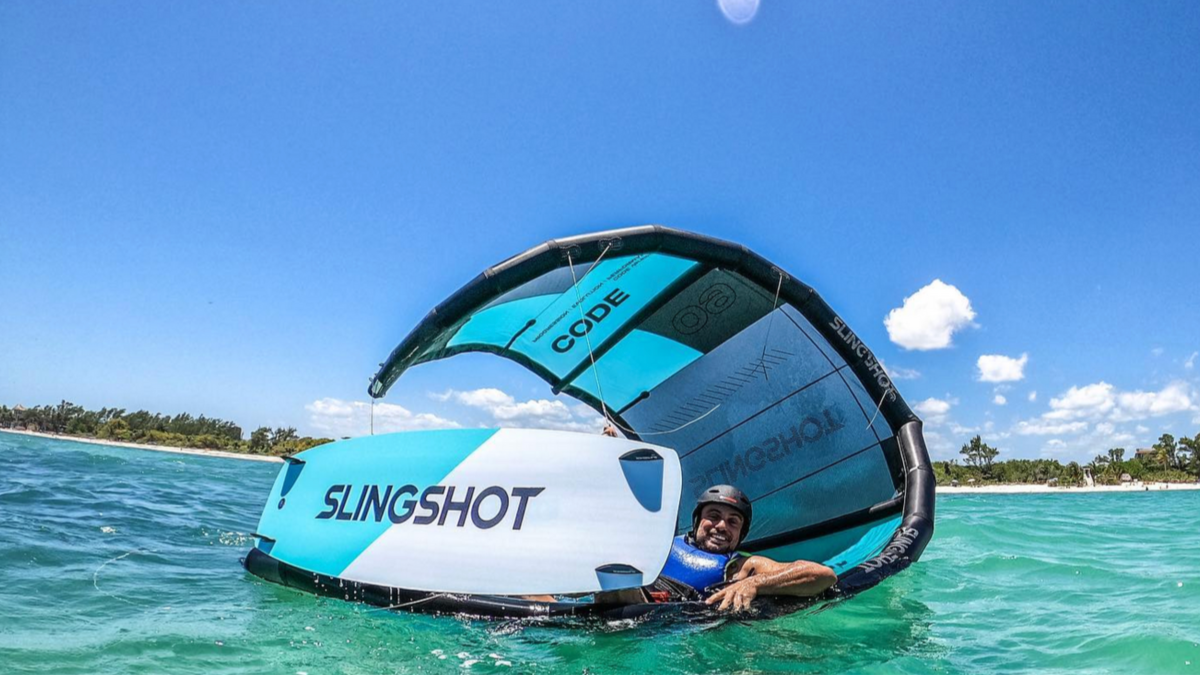
Kitesurfing is an adrenaline sport that mixes board riding with wind power for an exciting rush. It can be thrilling yet intimidating for beginners. To fully enjoy and master kitesurfing, confidence is key. Whether catching your first wind or leveling up, here are tips to boost your confidence on the water!
Nailing the Basics: Your Ticket to Kitesurfing Confidence
Mastering kitesurfing starts with the basics. Dive into lessons with an IKO-certified instructor who will guide you through the fundamentals, such as spot assessment, gear handling, how to use safety systems, launch, and land as a pilot, kite control, body dragging, steady-pull, and water starts. Also, learning how to perform self-landing during your lessons is crucial from the beginning. This skill ensures you're equipped to handle your kite safely when needed.
Why choose an IKO instructor?
- Top-Notch Training: IKO instructors provide a standardized, high-quality safety and best practices curriculum.
- Global Recognition: IKO certification is recognized worldwide, making it easy to continue improving wherever you kite. Get your IKO Vcard with an IKO instructor!
- Safety First: IKO instructors are trained to handle any situation on and off the water so you can confidently learn.
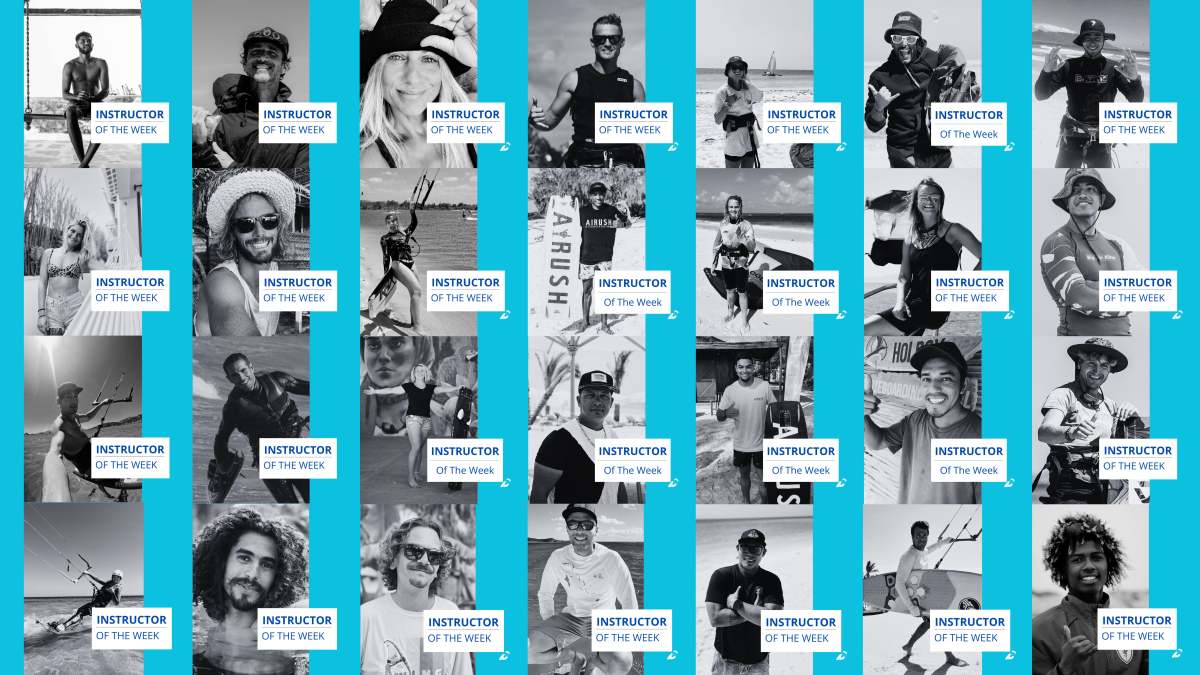
Take your time—each mastered skill builds confidence and brings you closer to pro status. The IKO Assistant Training Course - ATC is a fantastic next step in advancement. It’s ideal for independent kiters eager to enhance their skills and become a kitesurf specialist. Plus, it’s the first step towards a kitesurfing career with IKO. For more info, visit the IKO website.
Master the Skill: The Secret to Consistent Kitesurfing Practice
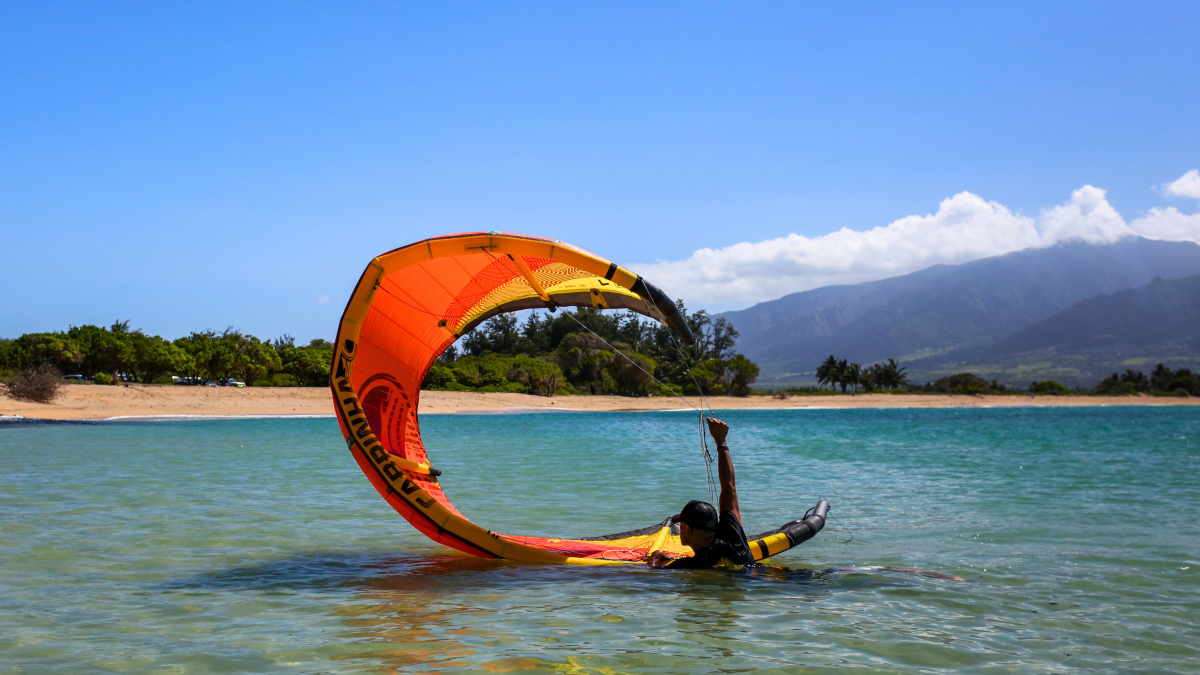
Kitesurfing improves with regular practice. The more time you spend on the water, the better you'll know your gear and handle different conditions. You'll become a versatile kiter by exploring various spots, ready for any challenge. Always prioritize safety by practicing techniques like self-rescue regularly. As you gain experience, learn how to perform self-rescue, self-launching, and pack down in deep water with an IKO instructor to enhance your skills further.
Consider attending the IKO Assistant Training Course - ATC to boost safety and skills. It’s your gateway to enhancing riding skills and mastering essential safety techniques like self-launching, board and kiter recovery, and assisting a fellow kiter. For more details, follow IKO on Instagram and Facebook, and check out the IKOIntl YouTube channel.
Get to Know Your Gear: The Key to Kitesurfing Confidence
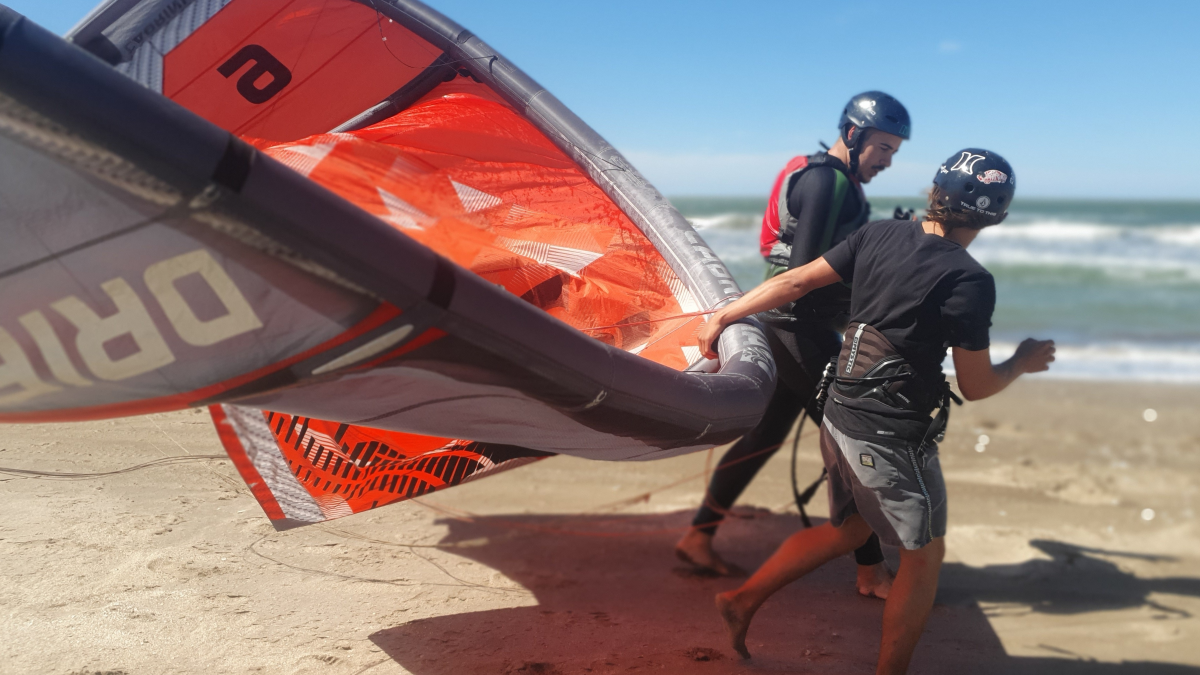
Your kitesurfing gear is your key to success. Master how to set up, pack, store, and repair your kite, manage your lines, and adjust your harness, helmet, and impact vest or buoyancy aid. Knowing and keeping your gear in top shape will boost your confidence and safety.
The IKO Assistant Training Course - ATC will give you all this information and more.
Take Small Steps and Savor Every Win
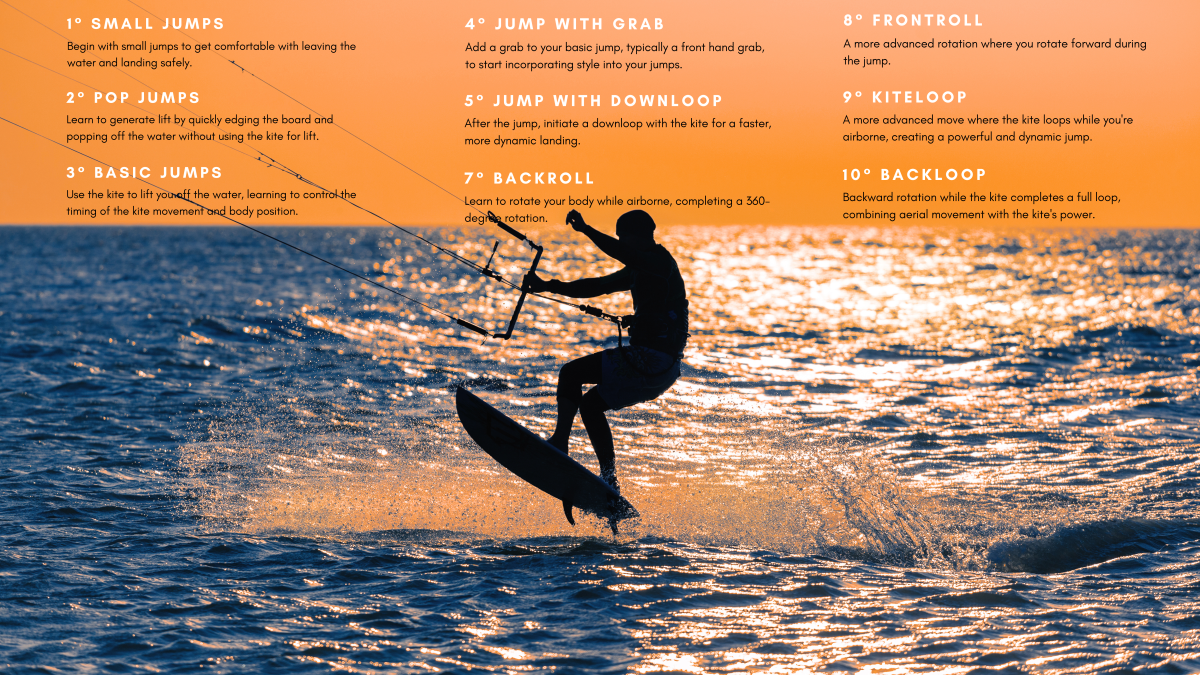
Don’t rush—mastering kitesurfing is a step-by-step process. Focus on one skill at a time and celebrate each small success. This approach ensures steady progress and keeps you motivated and confident.
The IKO Lesson Plan offers a structured guide for constant progress. Each phase builds a strong foundation, leading to continuous improvement. Your IKO certification and Vcard will proudly display your achievements once you’ve mastered the skills.
Find Your Crew: Boost Confidence with a Kitesurfing Community
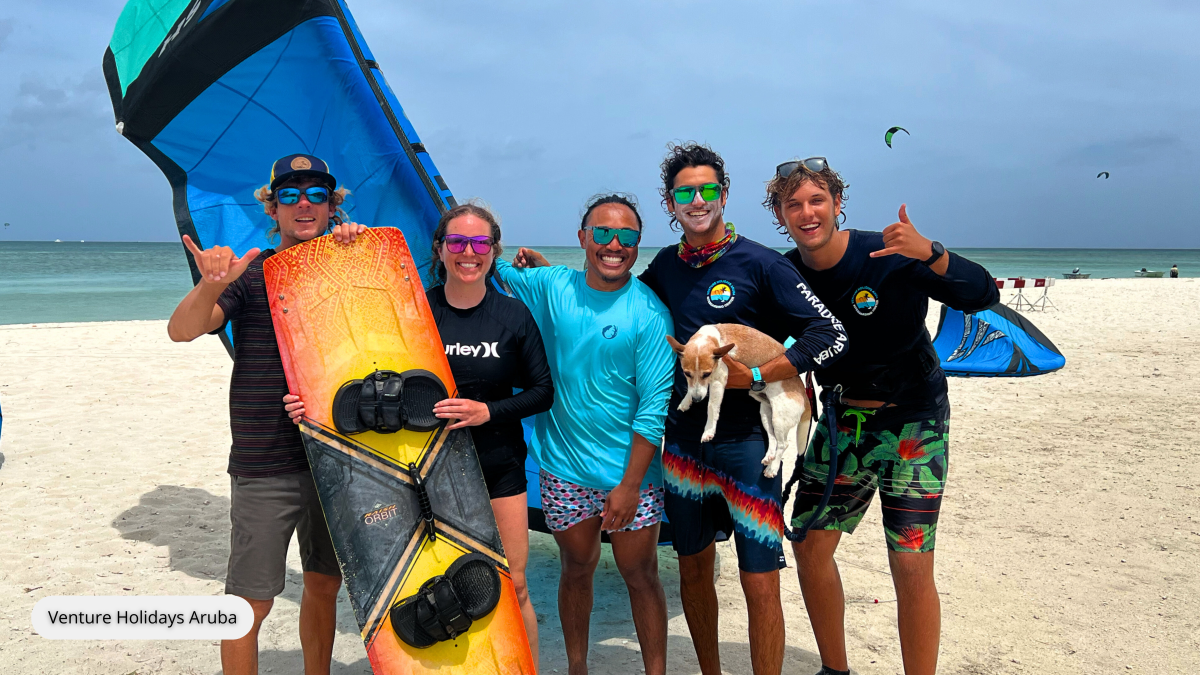
Joining a kitesurfing community boosts your confidence. Share stories, get tips from experienced kiters, and support each other through challenges. You'll also learn beach and water etiquette, ensuring respect and safety for everyone. Connect with the vibrant community through IKO’s Instagram and Facebook, and watch the inspiring videos on the IKOIntl YouTube channel.
Keep Your Head Up: Master Confidence with a Positive Mindset
Your mindset is your secret weapon. Embrace positivity, even when things don’t go as planned. Every mistake is a chance to learn and grow. Don’t let setbacks get you down—it’s all part of the journey. As you overcome challenges, your confidence will soar.
Useful Resources
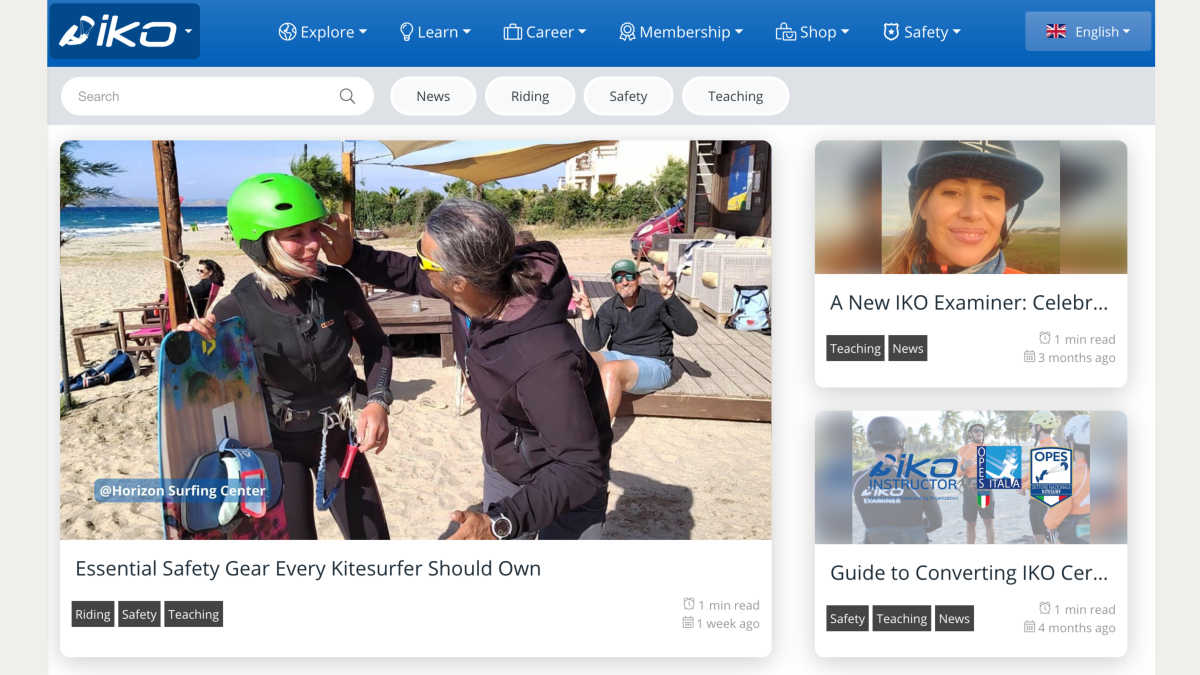
Don’t miss the opportunity to deepen your kitesurfing journey further by reading the IKO blogs.
A must-read is Become a Better and Safer Kiter: Take the IKO Assistant Training Course and Instructor Training Course. Check out the helpful YouTube video that explains the self-rescue procedure, which is essential for every kiter’s safety.
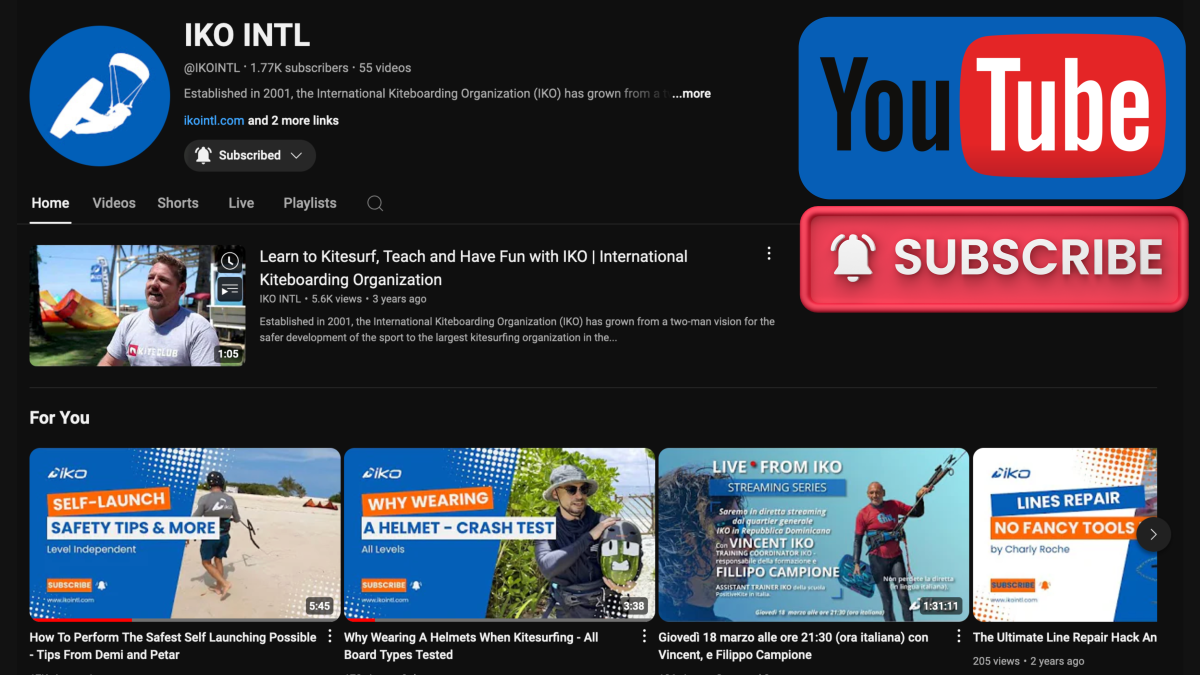
Hey Kiter, Never Stop to Improve Yourself
Building confidence in kitesurfing takes time, practice, and patience. Start with the basics, practice regularly, understand the conditions, and respect your kitesurf level. Enjoy each session and consider the IKO Assistant Training Course (ATC) to enhance your skills. Every kitesurf session brings you closer to becoming a safer, more skilled kiter.
#wearahelmetlikeapro #besmartbesafe #safetyfirst #kitesurfingwithiko
Happy kiting!
Kitesurfers are renowned for their passion and dedication to finding the perfect kitesurfing destination. Whether it's the summer or winter, the primary concern is simple – there must be wind! Amidst the plethora of information available online and the vast kitesurfing spots on the world map, planning a dream kitesurf vacation can be overwhelming. Fear not! Our simple questionnaire is here to guide you, ensuring you choose the ideal destination tailored to your wind, water temperature, and riding preferences.
Planning Tips
It's never too early to plan a kitesurf vacation. Early birds not only secure the best spots but also enjoy better offers, especially on flights. So, remember the mantra: "First booked, best traveled!"
The Three Simple Questions
Question #1: Wetsuit or No Wetsuit?
A. Wetsuit No: For those who despise wetsuits, December is the perfect time to flaunt kitesurfing adventures in places like Bermuda, basking in envy-inducing photos while your friends are bundled up at home.
B. Wetsuit Yes: Comfortable with the wetsuit? Protect your skin from the elements and embrace kitesurfing in incredible spots where a little sacrifice for the wetsuit is worthwhile.
Question #2: Twintip or Surfboard?
C. Twintip Board: If you're a freestyler who dreams of breaking jump records or mastering tricks with straps or boots, a twintip board is your go-to choice.
D. Surfboard: Passionate about the sound of waves breaking and the intimate rush that comes with surfing? The surfboard is your ticket to ride.
Question #3: Wind Strength Preferences
E. Between 12 and 25 knots: Ideal for those seeking a comfortable wind range for kitesurfing adventures.
F. Between 15 and 35 knots: Perfect for riders who crave a bit more thrill with stronger winds.
Decoding Your Destination
Now, let's decipher your answers and unveil your dream kitesurf destination for the up coming months of December, January and February:
- A, C, and E: Kenya and Sri Lanka
- Experience the beauty of Diani Beach and Watamu in Kenya or explore Kalpitiya Lagoon and Kappalady Lagoon in Sri Lanka.
- A, C, and F: Mexico
- Enjoy kitesurfing paradise in La Ventana/El Sargento, Isla Blanca, Tulum, Los Barriles, and El Cuyo.
- A, D, and E: The Caribbean
- Set sail for kitesurfing adventures in Aruba, Bahamas, Dominican Republic, Tobago, and Turks & Caicos.
- A, D, and F: Brazil
- Immerse yourself in the vibrant kitesurfing scene of Jericoacoara and Paracuru.
- B, C, and E: Cape Verde
- Don your wetsuit and head to Santa Maria or Ponta Preta in Sal for a memorable kitesurfing experience.
- B, C, and F: South Africa
- Experience the thrill of kitesurfing in Cape Town, West Coast, Cape Peninsula, and East Coast.
- B, D, and E: Australia-Queensland/Gold Coast
- Revel in kitesurfing adventures at Currumbin, Old Bar, Shearwater Esplanade, and Port Douglas.
- B, D, and F: The Canary Islands - Spain
- Explore the windy waters of El Médano in Tenerife, Flag Beach in Fuerteventura, Costa Calma, Famara in Lanzarote, and Playa Vargas in Gran Canaria.
Armed with your personalized destination guide, embark on your kitesurfing adventure from December until March, where wind, water, and waves await your enthusiastic embrace. Safe travels and enjoy the ride!
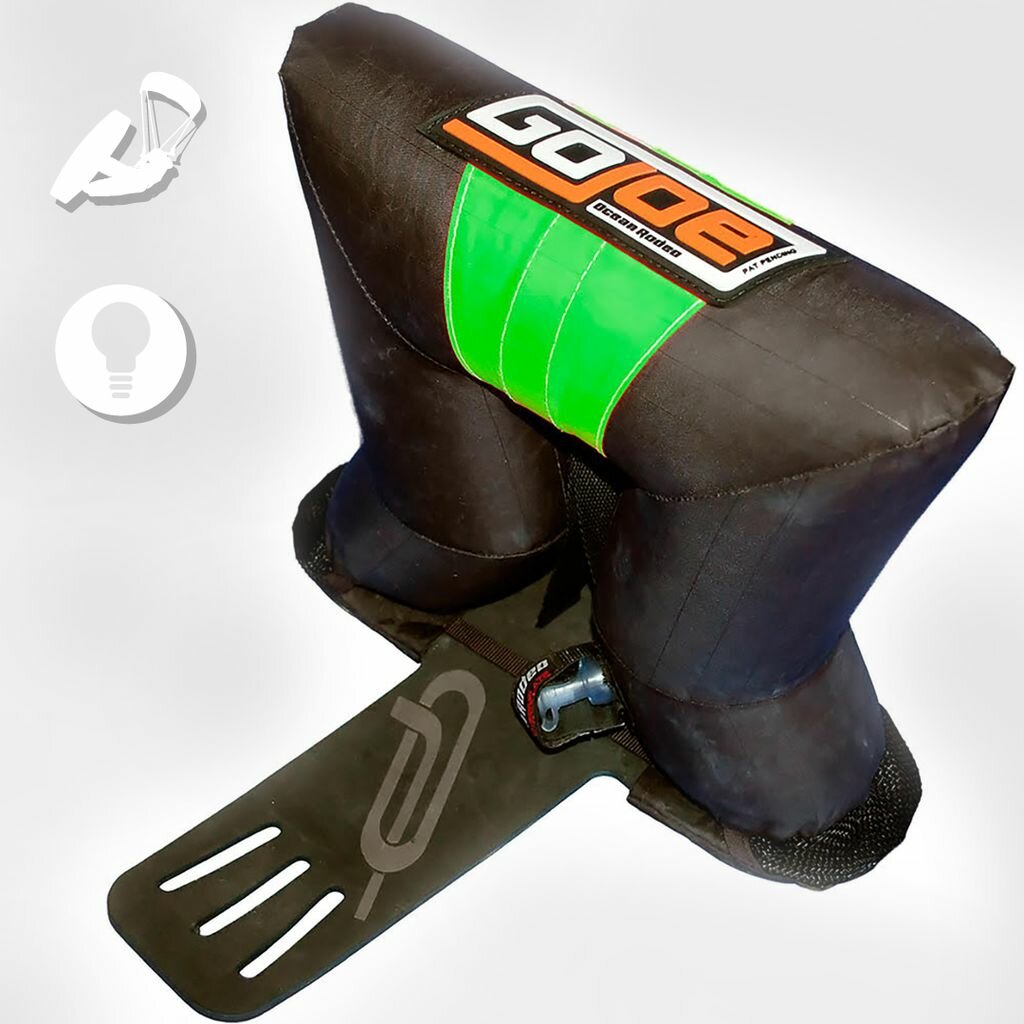
What is a GoJoe? Have you ever heard of it? What about seen one or let alone used one? The GoJoe is a leash board recovery tool. It is an inflatable body that is designed to sit unobtrusively between your feet on the board. If you ever lose your board the GoJoe will make your board easily visible by flipping your board over for you and catching the wind sailing the board down the wind so that it is never far from you after a crash or hard landing.
Some schools and instructors around the world are using them; now the question is… should you? The truth is that it is not always necessary but it can be useful. It is an awesome tool for students with difficulties to get the board back or places with strong currents that make the board harder to rescue.
GoJoe is the perfect solution for people who are afraid to stop using their board leash because of the difficulties they have body dragging or the conditions at their spot. Many people who are still using a board leash believe they are not dangerous as they have yet to have an accident with one.
If the GoJoe is an idea and concept you like though you do not want to invest the money, another alternative is buying an arm buoy for kids and inflating it around your board handle. This won’t be as effective though it will still help with board recovery and save you money.
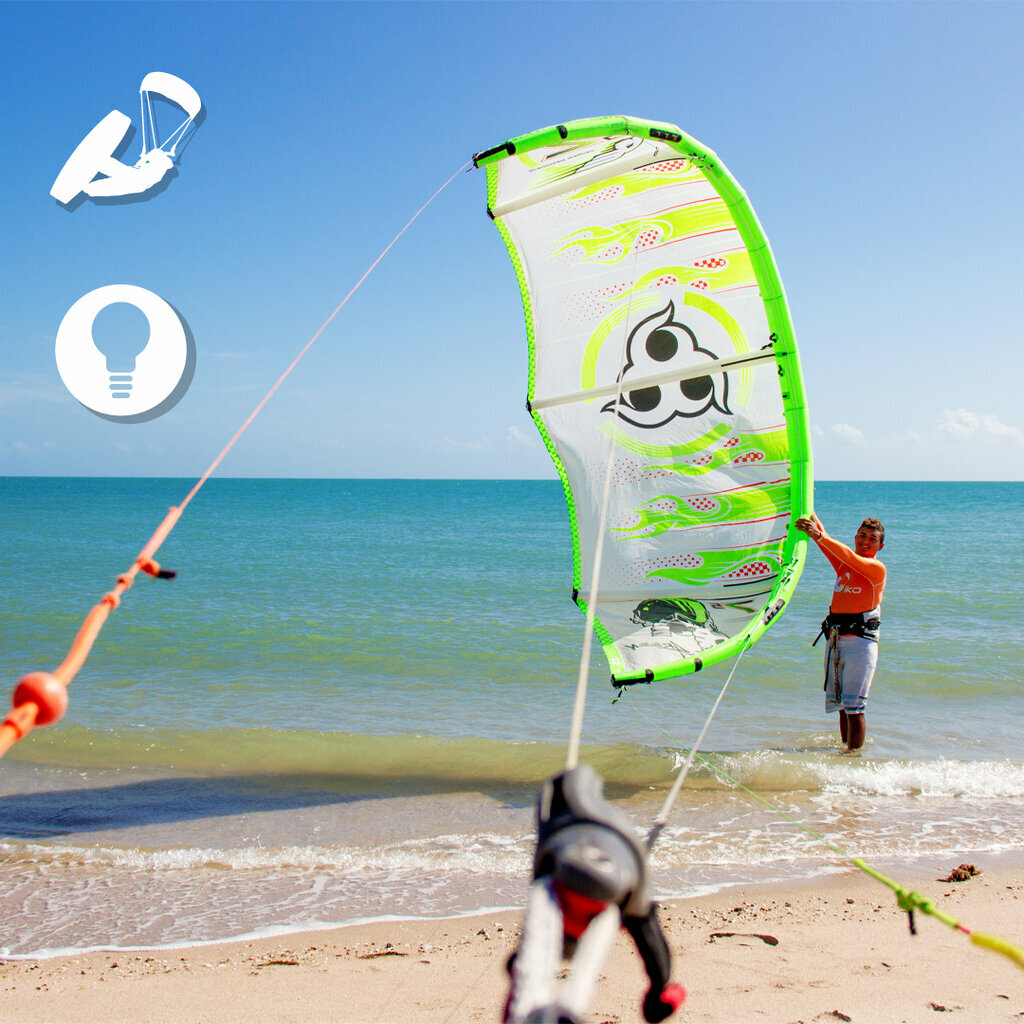
The main keys for kite producers are twofold: light and durable. Different materials have been tried out over the years, but polyester remains the most commonly used fabrics as it is resistant to all the harsh treatments your kite will be exposed. Every time you go kiting, it will be parked in the sand where the sun and the wind will damage it, then it will hit the water while performing a new trick.
The leading edge is usually made of Dacron which is actually a trademark of polyester. Years ago, most types of polyester used would tear easily until a lighter and high-tenacity polyester known as T9600 was invented. Most kite producers now use it. Only a few companies use a different material called Dacron weave 4-directional laminate. It is as light and durable as T9600 but less popular among kite makers as it is harder to weave.
No matter the material, what counts is to take care of your kite. Don’t leave it in the sun for too long, don’t brush the sand off the leading edge while your kite is still wet, and dry it completely before you put it away.
These simple tips will extend the ‘lifespan’ of your kite!
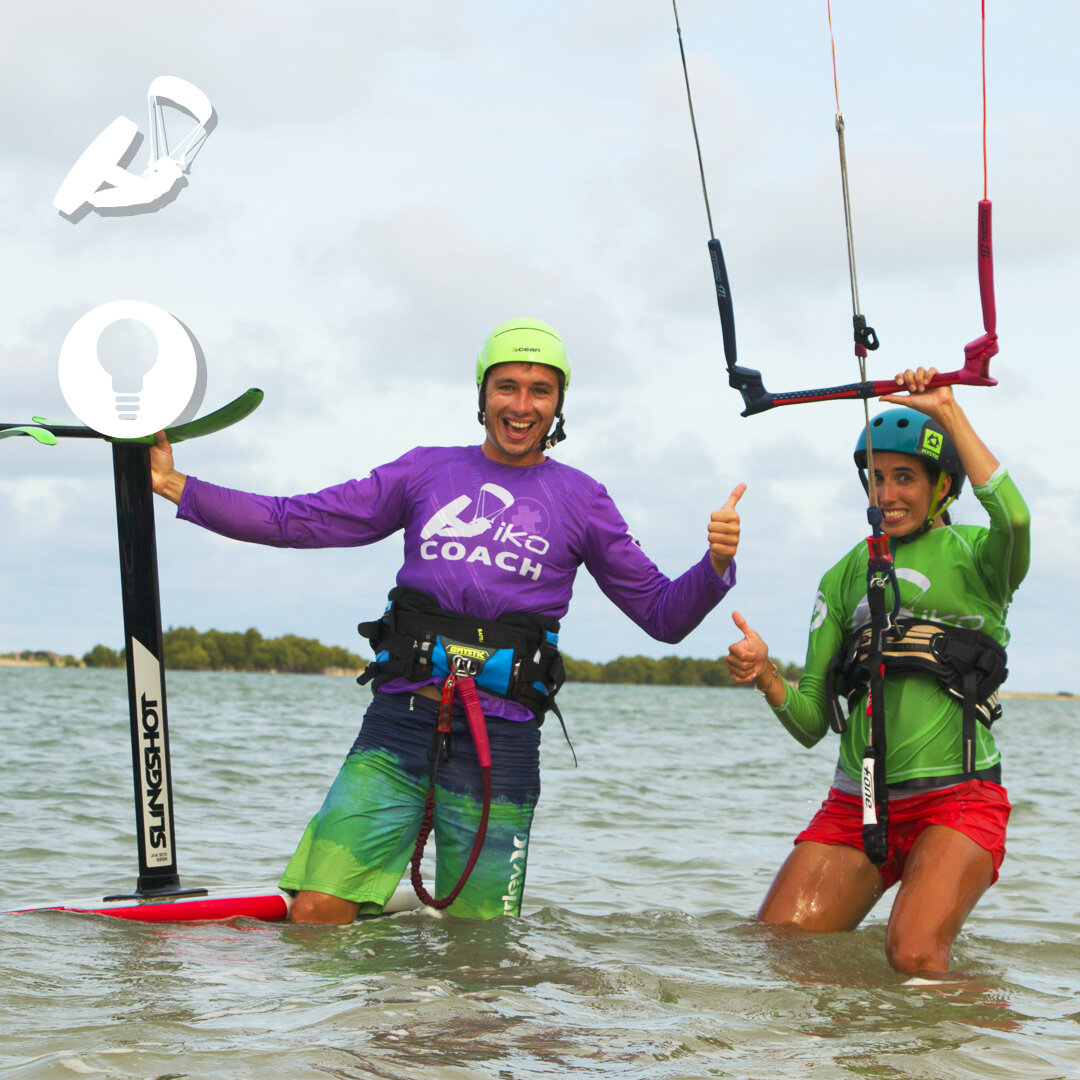
There is no question that hydrofoiling is growing extremely rapidly across the world. More companies are making boards at different price ranges, new hydrofoil competitions are emerging, schools are beginning to offer lessons and hydrofoil board rentals; these all signs of a growing industry.
When learning to hydrofoil at an IKO center you will be receiving an impact vest, helmet, and proper instruction. As the trend has risen we hear more and more horror story of pirate instructors who do not have proper progression or safety measures “teaching” others how to hydrofoil only to have them get injured.
It is important that no matter your level when you are learning and throughout your progression to continue using an impact vest and most importantly a helmet. We have unfortunately witnessed far too many hydrofoil board accidents. Hydrofoil accidents are worse than most other forms of accidents as with a hydrofoil it usually ends up being deep flesh wounds.
What we have seen is that whether or not someone who is hydrofoiling agrees with wearing safety protective equipment or not, eventually they convert after a close call or accident.
So what do you say? Should you always wear a helmet and impact vest when hydrofoiling or no point?
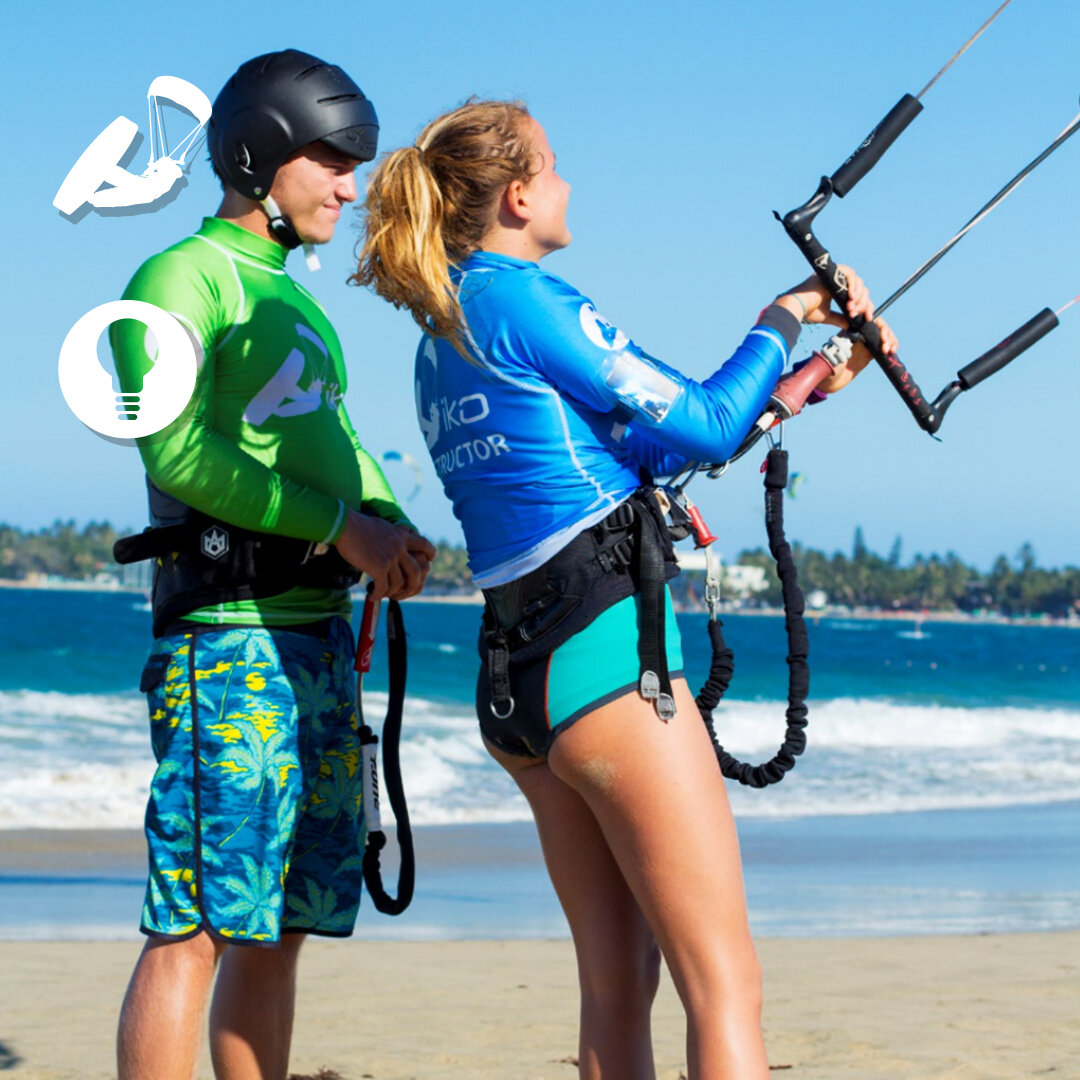
This is one of the main safety improvements from the last years. IKO has set this new standard for both students and Instructors. The kite leash must always be connected in the front part of the pilot’s harness. However most of the kiters, Instructors and students still have it connected on the harness handle with no special reason, just because ‘everybody does it this way’. There is a huge difference in terms of safety, whilst in the front, the quick release of the kite leash will always be easily accessible for the pilot; when connected to the back, in a serious situation (kite still looping), the pilot cannot access it and is in danger. Many accidents have happened this way, do not let it happen to you. If you do not unhook it is strongly recommended to use a short leash.
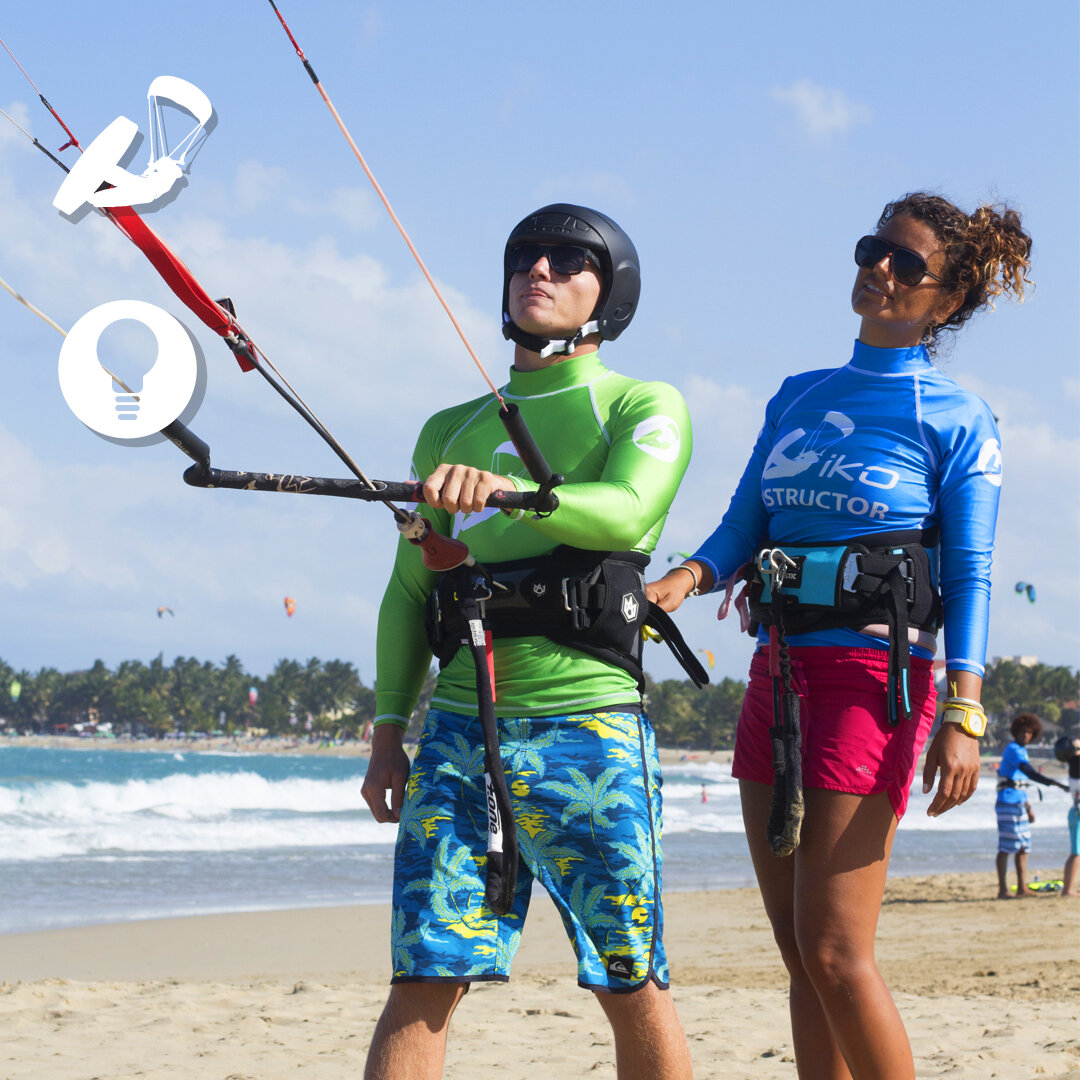
How curious is the fact that despite science and logic, sometimes us humans behave against what we instinctively know is beneficial for us; like eating clean and healthy, wearing a helmet while doing extreme sports and investing in pair of polarized sunglasses when out in the sun near water or snow to name a few!
Just like with helmets, wearing sunglasses while kiteboarding seems unfashionable and excuses like “I will lose them”, “They are annoying”, “They are expensive”, “Water droplets on the lens bother me” and so on, seem to always come up.
Truth is companies have filled all these gaps offering a range of options with different styles, price points, fits and a wide variety of options. So what is holding all us kiters back from wearing sunglasses while kiteboarding?
We believe that it is the social norms of the majority overriding the logic. If all the professionals, instructors and kiteboarding promotions wore sunglasses while riding, competing, teaching it would make people think twice… “If these people are wearing them…. maybe I should too.” Although it is not the case, just like with helmets. Only a few wear it and so it’s not really popular.
The use of polarized sunglasses, in general, will help reduce the chances of cataracts, macular degeneration, sunburn on the cornea and the risk of experiencing vision issues like “snow blindness” which can and have happened to kiters before.
After taking time to research we found many companies that offer sunglasses specifically for kiteboarding. We have found these top-rated companies offering a variety of different styles, prices, and features that are excellent for kite use: Kurtis Eye Wear, Ocean Glasses, Sea Specs, and Lip Sunglasses! We know there might be many more companies out there and if you are currently using one of them let the community know which you use and recommend!
So the question is do you already wear sunglasses and if not when will you start? Don't see the point of wearing sunglasses? Tell us why in the comments below!
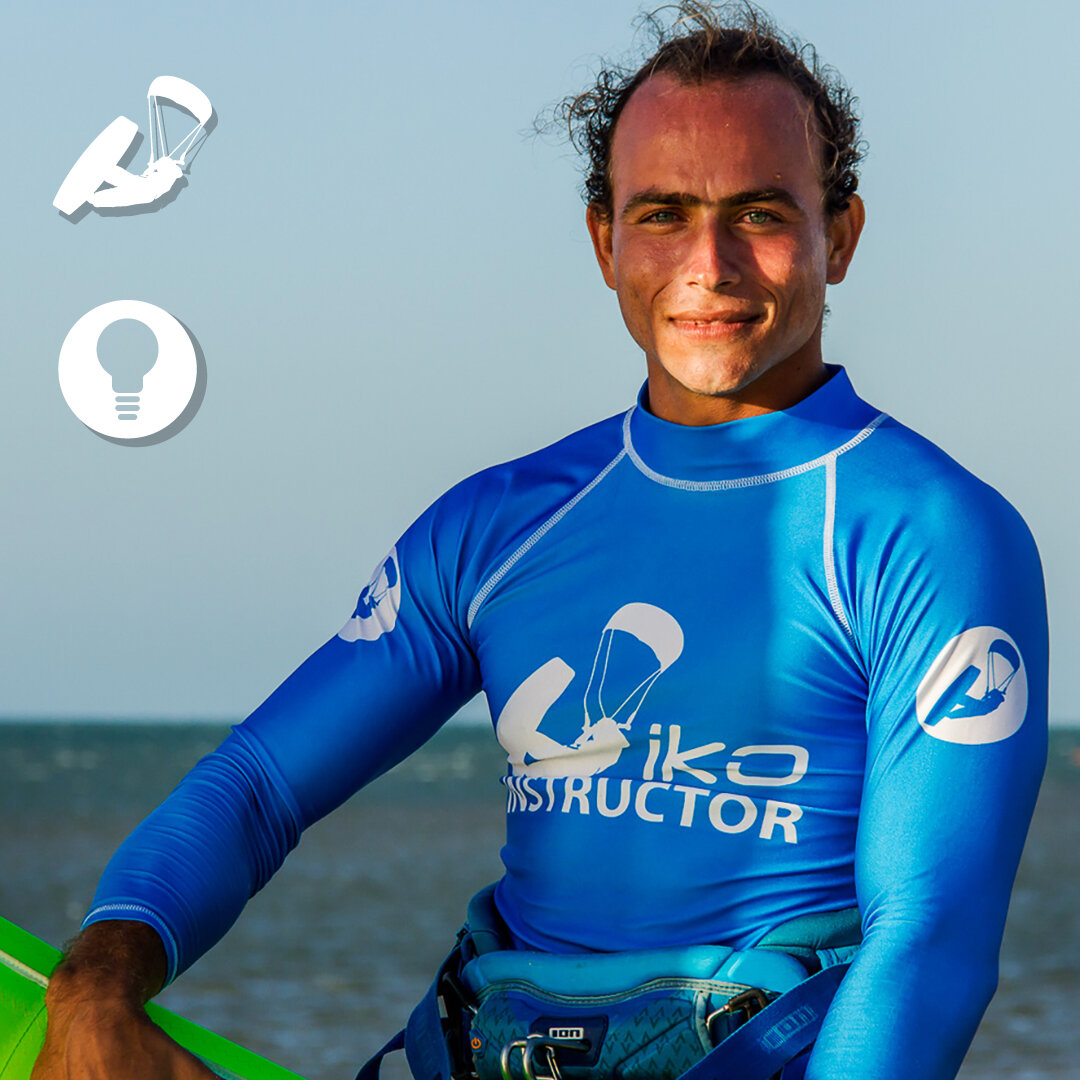
No matter what you are training, when you are with an Instructor you expect them to keep safety at all times in regards to whatever you are doing; right? Unfortunately, sometimes there is no way to tell if your Instructor is doing so! Luckily in kiteboarding though - you can!
Kiteboarding is one of the worlds most wonderful sports though it is also one of the world's most extreme sports. Below are five ways to tell your Instructor is taking your safety into consideration:
1. Your Instructor will introduce himself and evaluate your level
Your Instructor will ask you what you can and can’t do. He will also ask you whether you have an apprehension of water so he can adapt the lesson according to your knowledge and goals.
2. Your Instructor will set the objectives of the course
Your Instructor will explain the goals of the course with the exercises you will be asked to do. The Instructor will explain and safely instruct you how to achieve them. All this is part of the IKO step-by-step learning method to maximize your progression with safety and fun.
3. Your Instructor will provide you a helmet
This is mandatory for your safety no matter the weather conditions, the spot organization, and your level.
4. Your Instructor will provide you a buoyancy aid
Even if you know how to swim, this is another mandatory protection that any student must wear, even in shallow water! Double check that the buoyancy is at least 50 Newton.
5. Your Instructor holds a Valid IKO Certification
You can check it online by his name - ID # and/or he can show you his certification on his IKO app.
These five signs and steps will help ensure you are in good hands. Stay safe and have fun when going kiteboarding!
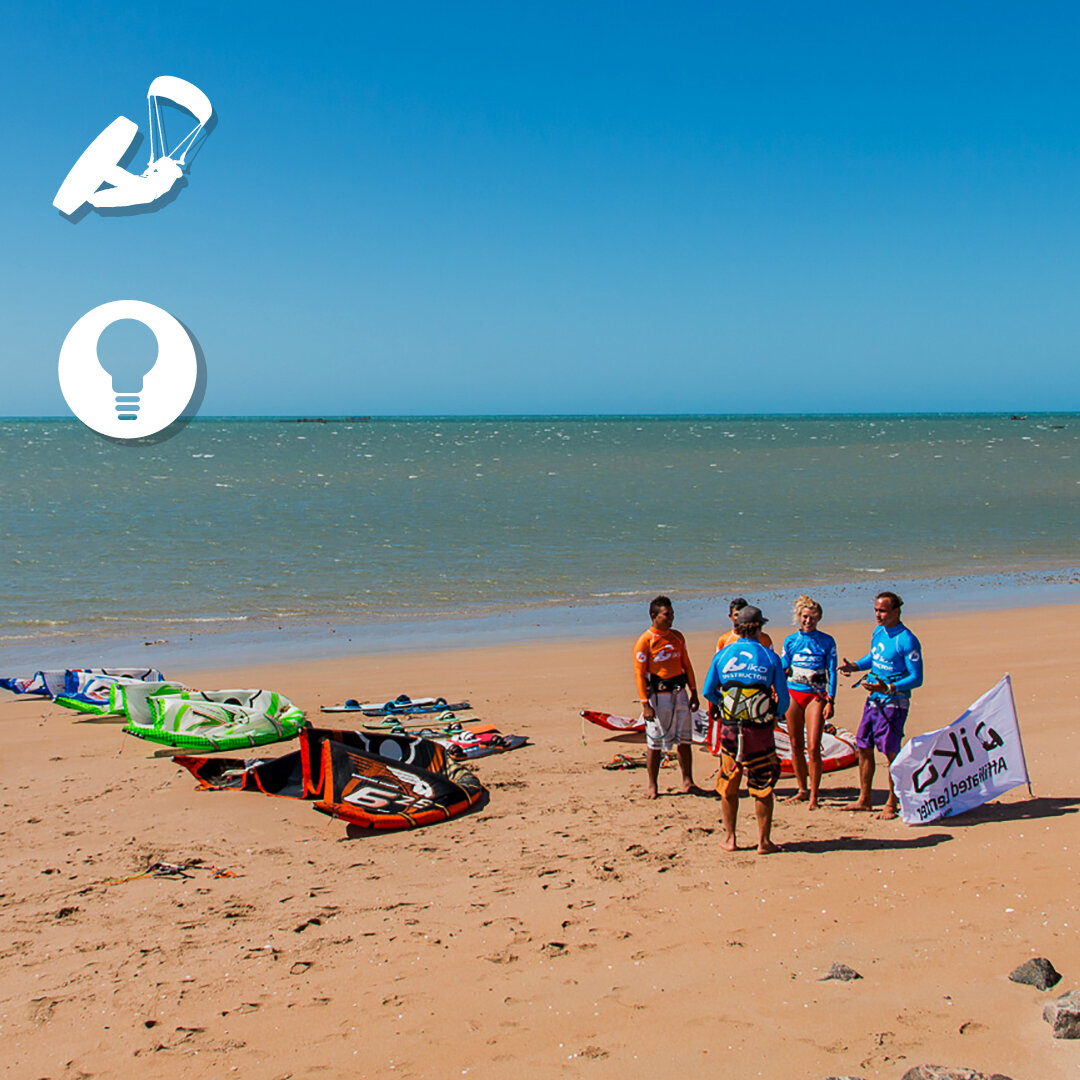
This is always ‘the’ question every kiter asks several times a day and will probably get different answers each time as there is no truth here. It depends on many factors; obviously, the wind strength and your weight matters but not only! Wind density will also be a key factor even if not many people are aware of it. A colder wind will be stronger than a warmer wind of the same speed. The size of the kite will also depend on your riding style. Are you more a strapless rider (smaller kite) or a freestyler on boots (average kite) or an old school rider who wants a bigger kite to stay more time in the air? The length of your lines also has a great impact on the power developed by your kite. All these aspects are discussed in an IKO Evolution Clinic and/or an Assistant Instructor Course.
Check out the IKO Training Calendar and join this training.
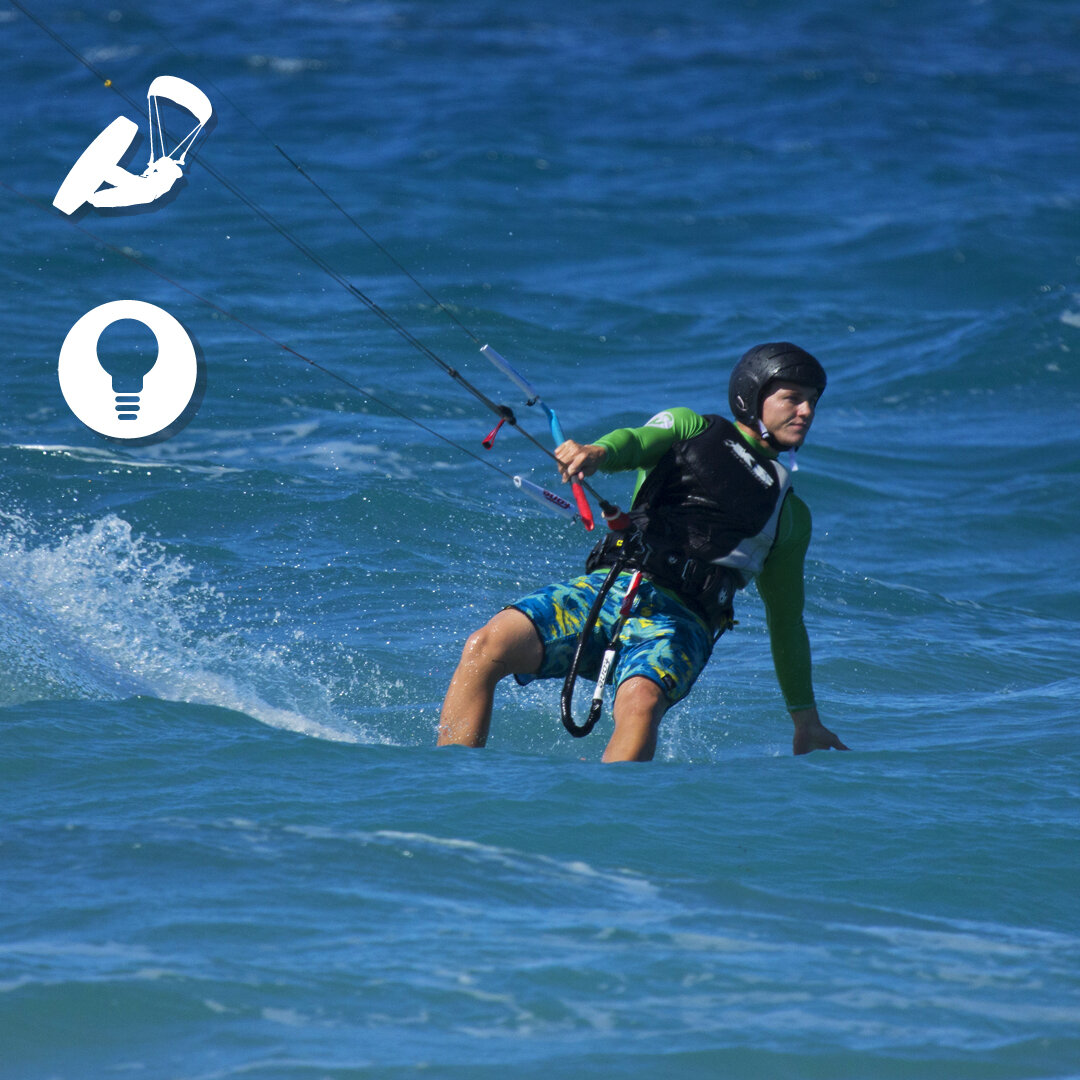
The most common thought for those who are thinking to get into kiteboarding is the strength and fitness aspect. Most imagine that to kiteboard you must be incredibly fit and healthy. Unfortunately/fortunately this is not true; virtually anyone can kiteboard!
We have seen it all from the ultra-fit hardcore athletes to the weekend warriors making it happen and having fun out in the water. That is the beauty about kiteboarding, anyone can get into it. Kiteboarding can become as challenging as one makes it. If someone wants to push the boundaries and go to the extreme or simply cruise around - the individual can choose as one wishes.
Overall, when you are kiteboarding you are putting in an effort, though, with the technology and equipment today it is way less demanding than it used to be in the very beginning. Essentially your core stability, upper body strength, and aerobic fitness are what are being taxed when kiteboarding. These three areas will be used when kiteboarding so if you are thinking to train any area of your body for kiteboarding consider those three.
Your upper body strength will help you carry your equipment in and out of the water as well as steer your kite efficiently. Having core strength will help reduce the chances of bodily injuries and maintain comfort during those long sessions. The only way to have long sessions though is having a healthy heart and good lungs especially once you begin trying to push your limits with tricks or stronger conditions.
An active warm up before and deep stretching after your kiteboarding sessions will help maintain your aerobic fitness and prepare the body for repeated sessions day after day on and off the water!
Which preconceptions did you have before you started kiteboarding? Comment them below
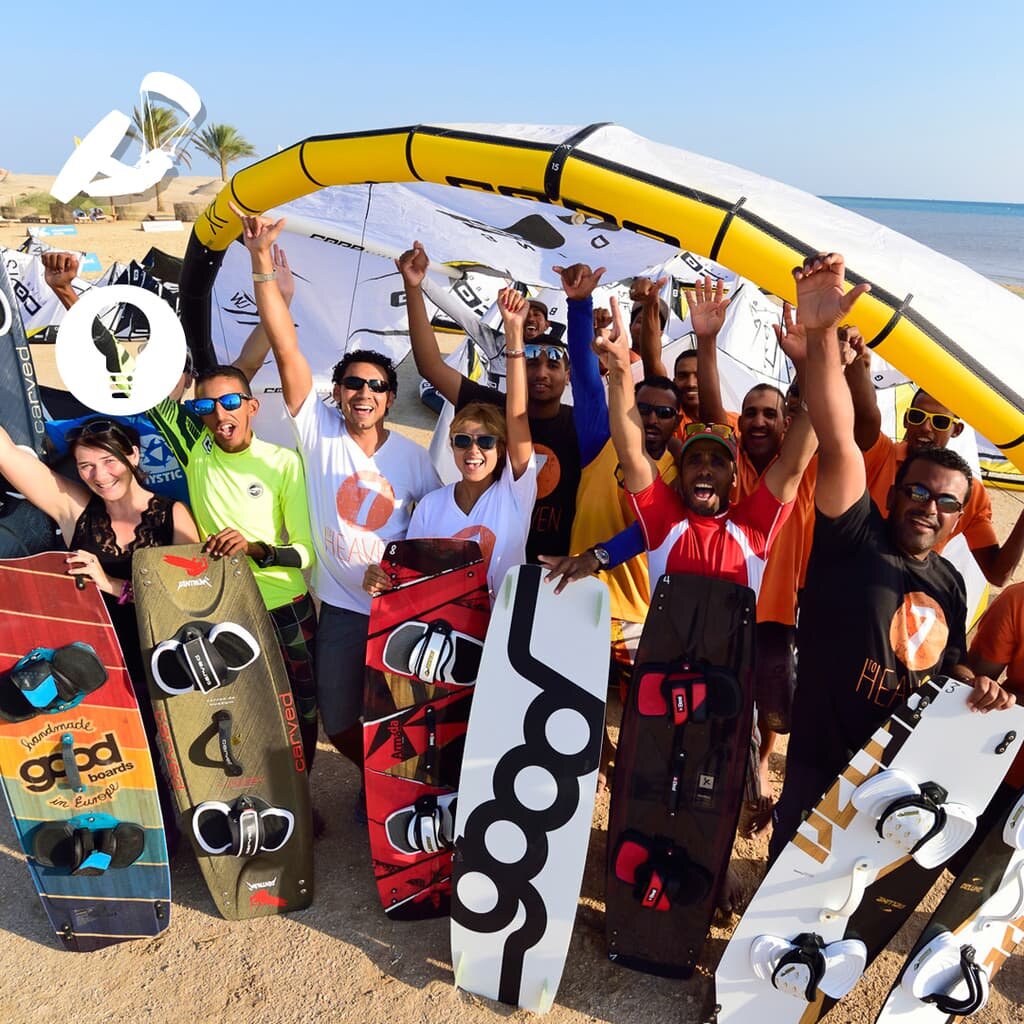
At one point or another in your kiteboarding career, you will consider buying equipment; it is pretty much inevitable. Once you begin thinking about buying gear, it might get overwhelming and confusing (this is common).
When considering to get your own equipment we have a few recommendations that are mentioned in other tips (browse our website and social media feeds to read them). Basically, though you will have four alternatives when buying equipment. Either you will be buying second hand, new of the year equipment, new closeout sales from previous years and/or the fourth option which is bought through the IKO Member deals.
Member deals are exclusive deals for the IKO Community which allows access to the latest and greatest equipment from some of the most known kiteboarding brands on the market around the world at a special price.
Buying second hand or close out equipment is a great way to score a deal though just make sure in both instances - that the kites are fully functional and ready to go in the water. When buying new equipment whether through a dealer or seizing an IKO member deal special rate- you are in safe hands.
We generally recommend kiteboarders to get the latest equipment on the market new though… sometimes getting something that is one to three years behind is also a great way to expand one's quiver and or beginning ones kiteboarding quiver on a budget.
If you have not yet bought equipment which way are you thinking to get your first quiver? If you have been kiteboarding for a while - what is your preferred way of getting kiteboarding gear?
Let us know how you go about your kiteboarding purchases in the comments below-
Bonus for the IKO Community: Have you checked out the member deals available to you in your profile?

Hi Everyone!
Just a quick email to let you know that we are restructuring our Kiter Premium Membership plans and we are about to remove the Lifetime option in favor of a yearly subscription. Put simply: the value of the Kiter Premium will soon far exceed any price we can put on a lifetime access!
In addition to the how-to videos series, the in-depth learning guides, the eCourses and the infographics already available with the Kiter Premium, we have two video series on how to hydrofoil and the common mistakes kiters make while learning lined up to be released soon, and much more in the upcoming months (and beyond).
Therefore, we thought you might be interested in a last chance to upgrade to the Lifetime plan and get all the future updates before we permanently remove it in 7 days.
If you are motivated about learning kiteboarding or progressing to the next level, the Kiter Premium is the ultimate learning companion to step up your game and this is the last ever opportunity to get the lifetime access.
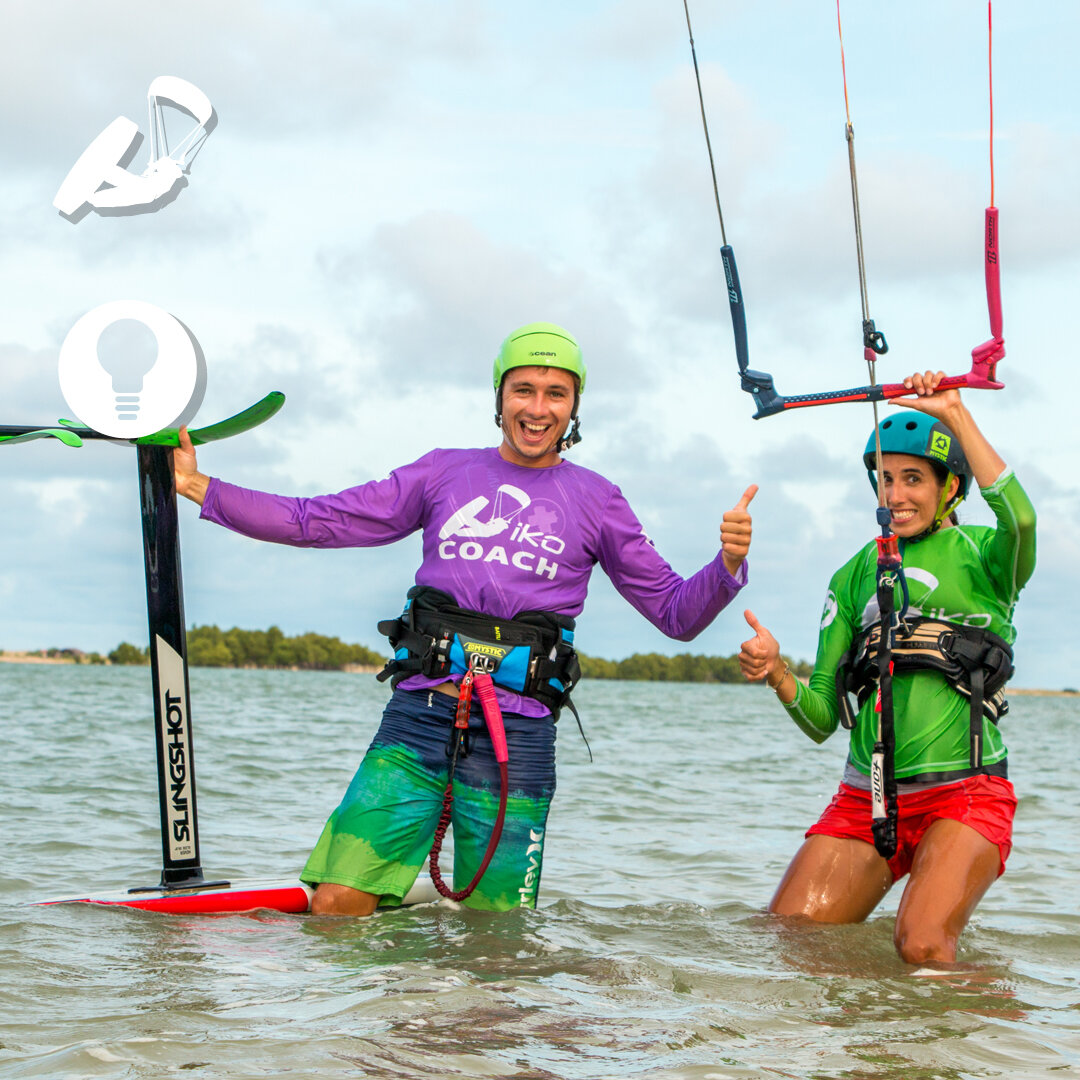
Have you taken measures to protect yourself whilst kiteboarding? Knowing the right of way rules (we had a tip about this two weeks ago) is one way to protect yourself while on the water though what about physical protection? Have you considered investing in an impact pfd vest? What about a helmet? These are the two simplest and most effective ways to physically protect yourself though can we go even further?
Some other ways the community has mentioned protecting yourself are by:
- Placing your leash in the front of your harness.
- Doing regular maintenance checks to your equipment. Especially your pulleys and lines.
- Using apparel to protect your skin and eyes during extensive kiteboarding sessions. Lycras with SPF, floating hats, kitesurfing glasses, and even sunscreen!
What other ways can we protect ourselves whether it is on and or off the water? Comment down below.
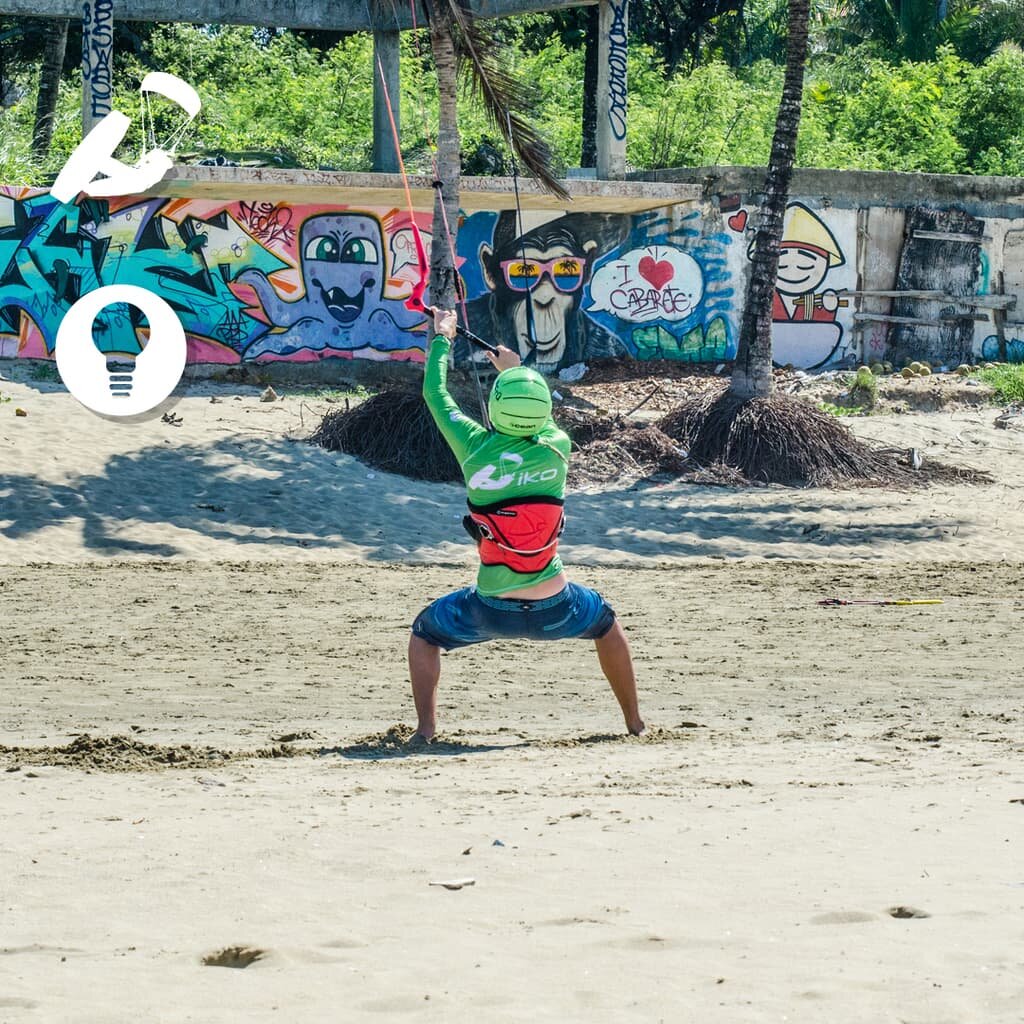
Most of us after watching extreme mega loop videos, king of the air replays or clips of wave riders going down huge barreling waves might become tempted to search for those extreme conditions and ride in them. These pro athletes featured in these videos make it appear relatively safe and easy. We do occasionally witness those brutal, close call, crash videos that we tend to forget about relatively fast.
Those 40 knots storm conditions or 8m tall swells might excite you though when those once in a lifetime “opportunities” cross your path you must take time to think twice. Going out in the wrong conditions can prove fatal. Becoming number one on the WOO Global Leaderboard must be done in as extremely controlled situations as possible and not simply “winged”. Same goes for larger swells and or a combination of strong wind and huge waves.
Kiteboarding is extreme enough - don’t enter extreme conditions because you might enter a situation that is extremely dangerous.
Examples of conditions to double think:
- If the wind is offshore
- 35+ knots
- -5m+ Tall Waves
- Waves with very shallow reef
- Gusty and Unstable Stormy winds
Comment below other conditions someone should double think before going out.
Bonus: Let us know what are some ways someone can minimize the risk in kiteboarding more extreme conditions?.
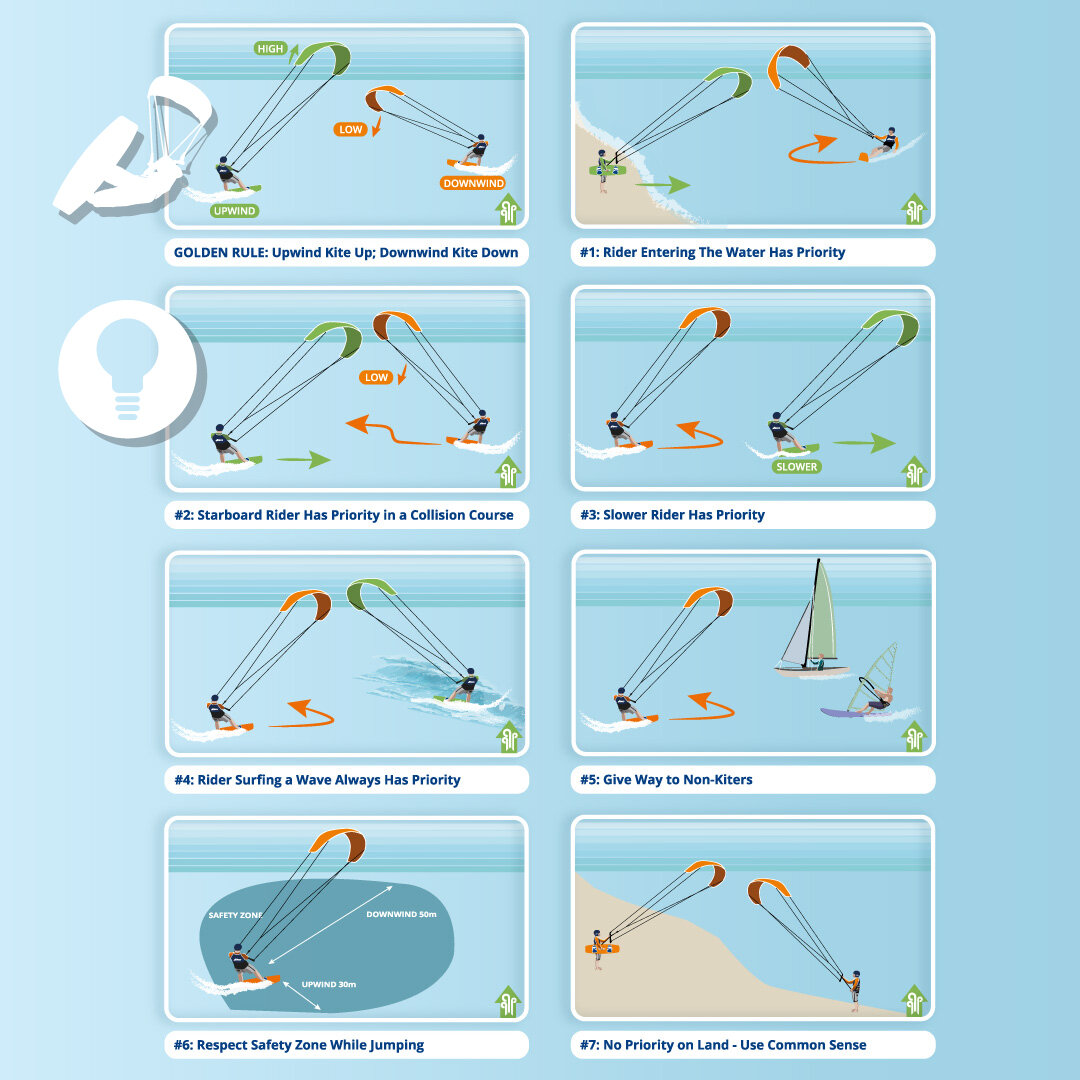
Take a moment to think and answer this… Do you believe it is important for car and motorcycle drivers to know the driving rules? If the answer is yes then would you believe it is also important for kiteboarders to know the rules of kiteboarding on and off the water? Unfortunately, many of us might agree with this logic though many individuals have never taken the time to learn and understand the rules.
In prior tips we have spoken about the 8 rules though it is important to share and remind all kite boarders of their existence.
Rule #1: The rider entering the water from the beach has right of way over the incoming rider.
Rule #2: Starboard rider (kite on the right-hand side) has priority over the oncoming rider and should keep his course, speed and heading to allow the other rider to avoid him.
Rule #3: When two riders are traveling in the same direction, the faster rider must give way to the slower rider in front.
Rule #4: The rider surfing a wave has priority over the one who is jumping or going in the opposite direction.
Rule #5: Right of way must be given to other ocean and beach users. Kiteboarder must travel downwind of them.
Rule #6: To jump, a kiteboarder must have a clear safety zone of 50m downwind and 30m upwind.
Rule #7: When two kiteboarder are on land at the same time, one kiter is preparing to enter in the water and the other one is ready to land, both proceed and keep clear from each other.
Golden Rule:
If you are passing upwind, keep your kite HIGH.
If you are passing downwind, keep your kite LOW.
These 8 rules will keep you and others safe during sessions. It is always important to be as sensible and educated as you can be in anything you are doing.

We all share a common passion for kitesurfing and our aim as a magazine is to inspire and help you achieve even more in our wonderful sport. Kiteworld delivers the most useful test reports and insightful content to help fuel your motivation and improve your kiting, whatever your level.
SUBSCRIBE TO KITEWORLD MAGAZINE AND YOU’LL GET:
- Each issue delivered every two months – in beautiful print editions, via sleek digital delivery, or both!
- A bang up-to-date Travel Guide to the world’s best kitesurfing destinations
- Plus: automatic entry into our regular equipment subscriber prize draws
Member deals are exclusive benefits of kiters with a premium membership, Instructors and IKO Centers. They help you save money on your favorite kite brand so you can keep investing in your favorite sport. Find all the current member deals in your profile, under the tab “Deals”. News deals are added every month so make sure to keep your membership up to date and login to your profile often.
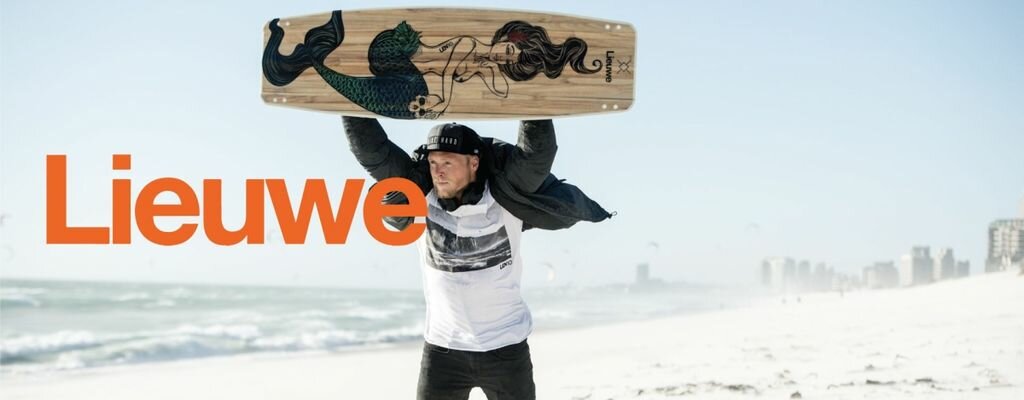
Lieuwe creates and designs handcrafted custom kiteboards in Holland. Each board is individually produced which means that none of the boards are the same. The wooden look we provide gives it a rough feeling. True craftsmanship with the newest technologies proudly shows us higher jumps, easier trick execution, and more comfortable riding.
Member deals are exclusive benefits of kiters with a premium membership, Instructors and IKO Centers. They help you save money on your favorite kite brand so you can keep investing in your favorite sport. Find all the current member deals in your profile, under the tab “Deals”. News deals are added every month so make sure to keep your membership up to date and login to your profile often.
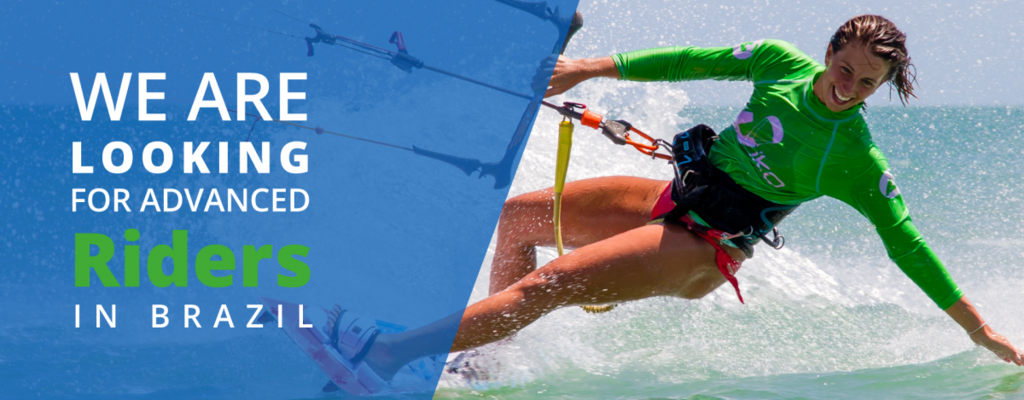
Hello Brazil!
We are recruiting for 4 enthusiastic kiteboarders (2 Females / 2 Males) to be part of a new IKO video series being filmed at Ilha-do-Guajiru in Itarema, Ceara, Brazil.
If you are in the area between December 4th 2018 till December 7th 2018 and meet the minimum riding level make sure to apply!
You will need to have a minimum riding level equivalent to kiteboarder Advanced - Level 4
We are filming:
- Instructional Videos
- Progression Videos
- Promotional Videos
To be part of the video series please submit general information about yourself with photos and videos to [email protected].
If you cannot attend, though know someone who would be a good candidate for the videos make sure to pass along the opportunity to them!
Thank you in advance,
Windy Regards,
IKO

Kiters of all level, this offer is for you! We have gathered our very best educational contents including the ebook series, videos, quizzes in one membership. We are offering a special offer Friday 23 of November 2018. Discover what is inside the Kiter Premium membership today and invest in your kite education.
The Kiter Premium membership comes in 3 offers, all with a single payment:
- Lifetime membership
- One-year membership
- One-month membership
Make sure you log into your account next Friday and click on the orange button "Upgrade" to seize this offer.
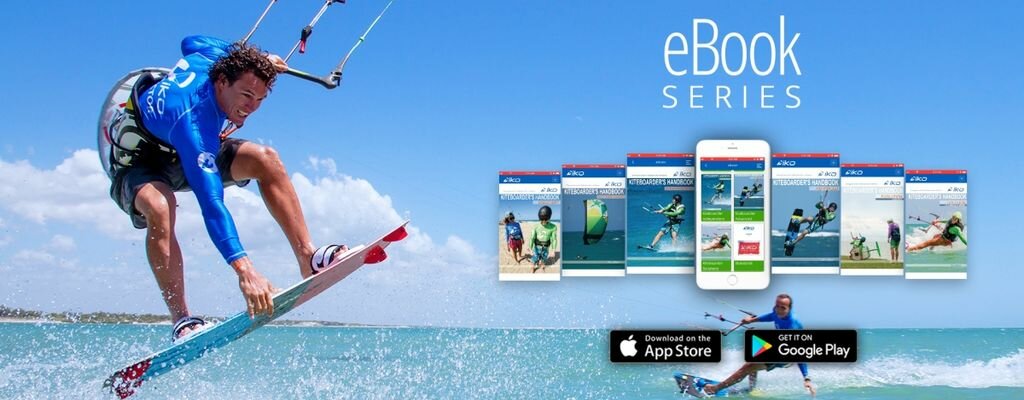 All of our eBooks are filled with detailed explanations, graphs, examples, and exercises that will help you learn proper kiteboarding practices and techniques, outlining what should and should not be done at every step of the learning process in order to reach your next goal today.
All of our eBooks are filled with detailed explanations, graphs, examples, and exercises that will help you learn proper kiteboarding practices and techniques, outlining what should and should not be done at every step of the learning process in order to reach your next goal today.
Beginners, the eBook series offer the perfect complementary tools to increase the benefit of your kiteboarding lesson to become a safe and independent rider. Advanced kiters, our Evolution series (Freeride, Freestyle, Wave Riding, Hydrofoil) will help you define your needs and progress fast and efficiently in your favorite discipline.
And now get instant access to all the eBook series and the very best of the IKO knowledge at the touch of your fingertips, straight on the new IKO App. All the eBook series and content are included in the Kiter Premium and Instructor memberships.
The New Training Path Helps You at Any LevelDid you know that IKO helps every kiter from the beginner level to the more advanced one? Our most recent course, the Evolution Clinic enables advanced kiters to improve their skills and adquiere new theoretical knowledge. The Evolution level is only taught by IKO Coach. Check the details of all courses on our website! |
 |
Recover Your Board Faster and Easier Without the Board LeashThe board leash has been totally banned from IKO since 2011. Some non-certified Instructors still use it as is “makes it easier for the student and we never lose the board”. IKO wants to remind that it is very dangerous and it is best to lose a board than to have an unfortunate accident. Beginners can now use a buoy fixed on the board’s handle. This helps to spot the board that is pushed downwind for a faster and easier recovery even by an inexperienced rider.
|
 |
Avoid Being Hit by Your Own BoardThe new strapless wave riders tendency brings the board leash back to “avoid the board being pushed away by the wave”.Even if you do not jump, the risk of being hit by your own board isf high. Some may think, “but why surfers use one?” A surfer needs to have a board leash as his board is his only surviving help, his buoy. Kiteboarders should use their kite to help themselves. Have a look at the self-rescue and packdown procedure if you are not familiar with both. Any IKO Instructor will be happy to teach to you.
|
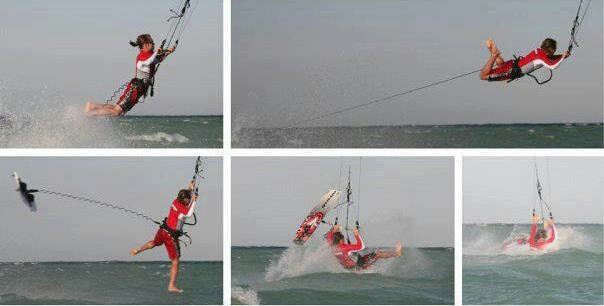 |
Do You Master the Self-landing?Did you know that self-landing is learned and mastered during the IKO Discovery Course? It is always better to land your kite to someone. Avoid landing on your own. However, in some occasion you might finish your session alone and would need to do a self-landing. It can be dangerous to do it on your own with no special training. Take time to review it in an IKO affiliated Center.
|
 |
IT’S A GIRL THING. IKO DEBUTS T’S AND TANKS FOR WOMEN
The IKO is pleased to introduce you to our new woman’s signature clothing line starting with our T’s and Tanks collection. This new IKO girl gear features a burst of colorful sports tops suited for the active lifestyle of all kiteboarder women and is branded with the elite IKO logo.
Our t-shirts are American Apparel with a design called, “IKO Girl.” Our tank tops are also American Apparel. Our t’s and tanks come in four brilliant colors: coral; turquoise; sunshine and mint.
Girls, get your IKO kiteboarder mojo on with IKO’s new T’s and Tanks collection especially made to fit you.
Held in St Pierre la Mer, in the South of France, this three-day event combined freestyle and racing skills. Pushing competitors to their limits, top riders such as Youri Zoon and Julien Kerneur contended on a downwind racecourse with obstacles in the form of floating modules. This new competition form, being very attractive to the public, can be entered by both professional and amateurs riders.
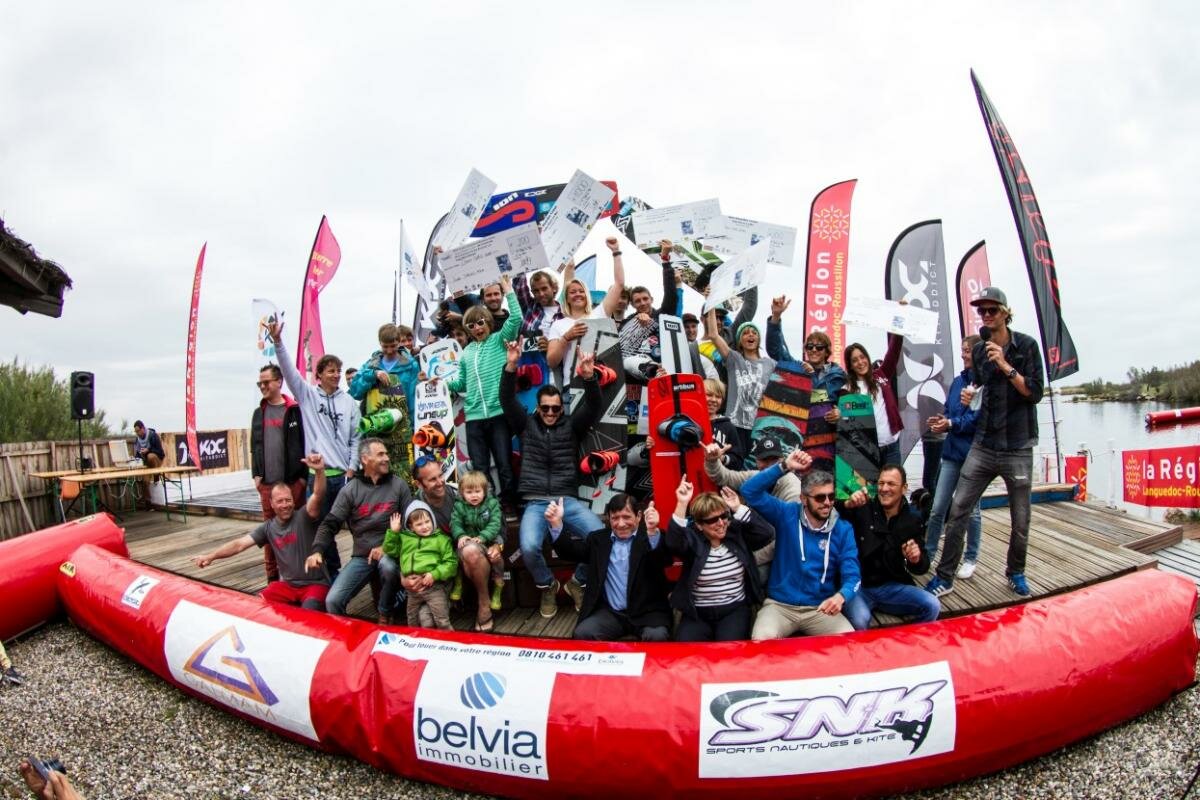
IKO’s very own Examiner, Steve Jones, reports the following on this first leg of events.
Day 1
Due to the weather forecast the competition started a day early with a round for the junior kitesurfers, who had just finished their first round of the European Junior Kitesurfing Cup. The heats were held on the lake next to the sailing school with the modules set up in a new “Z” configuration, making two turning buoys. The winner Tom Bridge (GB) made good use of the Northerly Tramontane wind, followed by Nino Liboni (F) in second place and joint third Gaspard Genazando (F) and Romain Giuliano (F).
Day 2
The following day, Saturday 17th April the main event started and the decision was made to take the course onto the sea to allow for more constant wind. The north-westerly Tramontane made beautiful blue skies and unusually warm temperatures for the time of year. This time the course was laid out in a “V” configuration and the riders could either choose to start directly from the beach or hit the start line at full speed when the green flag was shown. The first set was won by local French legend Sebastien Garat, followed by the last year’s Kiteboarder Cross tour winner Geoffery Mascarel (F). Oliver Bridge (GB) and Julien Kerneur (F) finished joint third.
The second set was run in the butter flat water and saw Julien Kerneur (F) in first place, Geoffery Mascarel (F) second place and the world freestyle champion Youri Zoon (NL) putting on a show in third.
Day 3
The following morning competitors woke to rain and the competition was put on hold until the Easterly wind started to blow and the rain went to Spain. The course yet again changed venue and was put on the lake where a “V” formation was organised but this time with the largest module, nicknamed “The Wall”, put on a different tack to the previous day, ideal for those who prefer jumping on a starboard tack.
Two sets were run. Results of the first set: Geoffery Mascarel (F) 1st, Julien Kerneur (F) 2nd and Andréa Amman (CH) 3rd. Results of the second set: Oliver Bridge (GB) 1st, Julien Kerneur (F) 2nd and Geoffery Mascarel (FR) 3rd.
As part of the event there were lots of things to do for visitors of the event. Around the sailing school snack bar there was an animations village with stands showing the latest kite material and clothing, a big air jump for BMXs (jumping with a bike onto a huge airbag), an enormous inflatable climbing wall and a mechanical surf board.
On the last day of the event and of the Easter weekend the races were cancelled due to the weather. The prize giving with a total of 5000 euros prize money was held at the end of the morning before everyone headed home. The overall winner was Julien Kerneur (F), second place Geoffery Mascarel (F) and third Sebastien Garat (F).
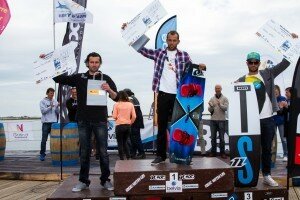
This first stage of the Kitboarder Cross Tour 2014 was run by SNkite, the local kitesurfing school of Saint Pierre-la-Mer, along with support from Best Kiteboarding, Kitaddict, Belvia Immobilier, Galmam Batiment, the commune of Fleury d’Aude, the Grand Narbonne, the department of Aude and the region of the Languedoc Roussillon.
The next tour date for the KBC Tour will be in Dublin, Ireland on 24th and 25th May during the Battle of the Bay kitesurfing event.
Register now to take part on www.kiteboardercross.fr
| Contact IKO | |
 |
Call us |
| Our office team is available from 12:00 p.m to 5:00 p.m and 6:00 p.m to 8:30 p.m UTC/GMT. +1(809) 5719530 |
|
 |
Email us |
| Not found your answer from the FAQs? We experience high volume requests, however we will do our best to answer as soon as possible. |
|
| Contact IKO | |
 |
Call us |
| Our office team is available from 12:00 p.m to 5:00 p.m and 6:00 p.m to 8:30 p.m UTC/GMT. +1(809) 5719530 |
|
 |
Email us |
| Not found your answer from the FAQs? We experience high volume requests, however we will do our best to answer as soon as possible. |
|


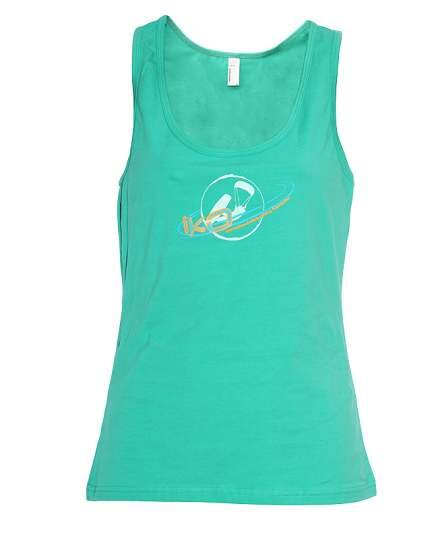
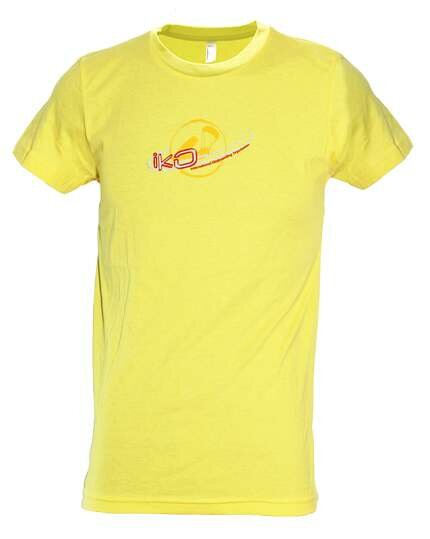
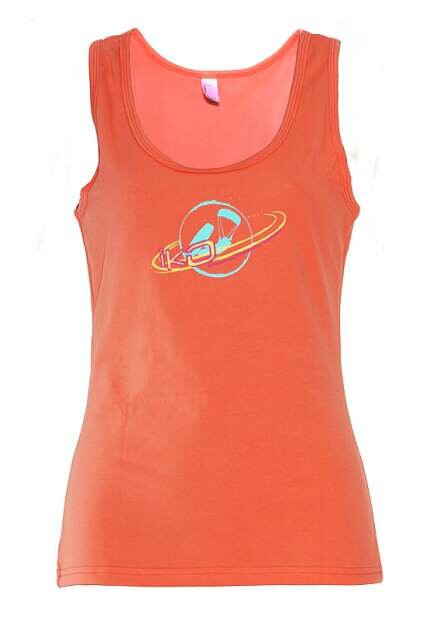
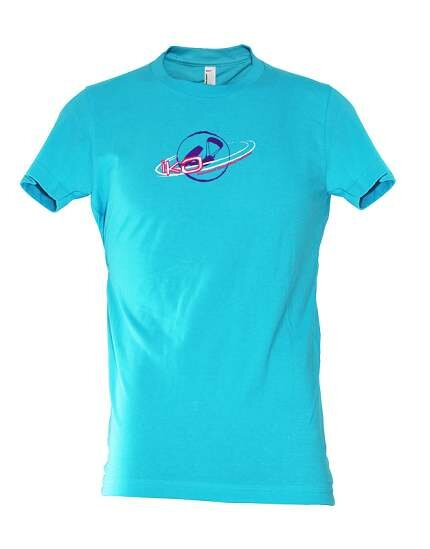
.png)

